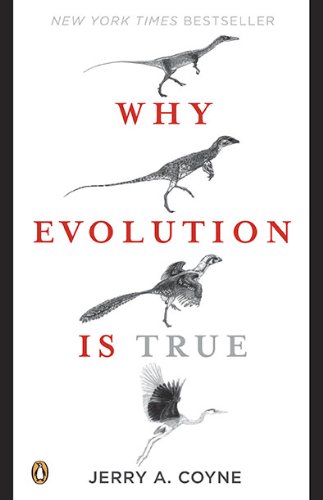Ontogeny Recapitulates Phylogeny
Now, we’re not absolutely sure why some species retain much of their evolutionary history during development. The “adding new stuff onto old” principle is just a hypothesis—an explanation for the facts of embryology. It’s hard to prove that it was easier for a developmental program to evolve one way rather than another. But the facts of embryology remain, and make sense only in light of evolution. All vertebrates begin development looking like embryonic fish because we all descended from a fish-like ancestor with a fish-like embryo. We see strange contortions and disappearances of organs, blood vessels, and gill slits because descendants still carry the genes and developmental programs of ancestors. And the sequence of developmental changes also makes sense: at one stage of development mammals have an embryonic circulatory system like that of reptiles; but we don’t see the converse situation. Why? Because mammals descended from early reptiles and not vice versa.
Notes:
Embryos go through the stages of the evolution of their ancestors as they develop.
Folksonomies: evolution vestigial recapitulation embryology
Taxonomies:
/pets/reptiles (0.705909)
/science/medicine/embryology (0.534539)
/science/social science/history (0.376683)
Keywords:
Ontogeny Recapitulates Phylogeny (0.901786 (neutral:0.000000)), developmental program (0.648373 (negative:-0.462120)), embryonic fish (0.634953 (negative:-0.409957)), strange contortions (0.631832 (negative:-0.503018)), evolutionary history (0.620542 (neutral:0.000000)), developmental programs (0.619221 (negative:-0.273551)), gill slits (0.615469 (positive:0.204406)), developmental changes (0.613628 (negative:-0.308659)), new stuff (0.608043 (neutral:0.000000)), early reptiles (0.602753 (negative:-0.286919)), converse situation (0.597345 (positive:0.299630)), hypothesis—an explanation (0.595520 (negative:-0.306580)), fish-like ancestor (0.591953 (neutral:0.000000)), development mammals (0.591789 (neutral:0.000000)), fish-like embryo (0.590345 (neutral:0.000000)), blood vessels (0.580501 (negative:-0.282985)), embryology (0.528478 (negative:-0.306580)), ancestors (0.490211 (negative:-0.273551)), sense (0.486546 (negative:-0.308659)), facts (0.465056 (negative:-0.306580)), disappearances (0.457411 (negative:-0.547344)), vertebrates (0.452841 (neutral:0.000000)), Embryos (0.451516 (neutral:0.000000)), principle (0.442115 (negative:-0.306580)), stages (0.439381 (neutral:0.000000)), species (0.438309 (negative:-0.270328)), organs (0.437495 (negative:-0.547344)), genes (0.437477 (negative:-0.273551)), way (0.434645 (neutral:0.000000)), sequence (0.434180 (negative:-0.308659))
Entities:
blood vessels:FieldTerminology (0.837444 (negative:-0.282985))
Concepts:
Recapitulation theory (0.986781): dbpedia | freebase | yago
Embryo (0.956450): dbpedia | freebase | opencyc
Developmental biology (0.833155): dbpedia | freebase
Heart (0.775219): dbpedia | freebase | opencyc
Evolutionary developmental biology (0.676490): dbpedia | freebase
Species (0.640133): dbpedia | freebase | opencyc
Evolution (0.632973): dbpedia | freebase | opencyc
Reptile (0.584249): dbpedia | freebase | opencyc





